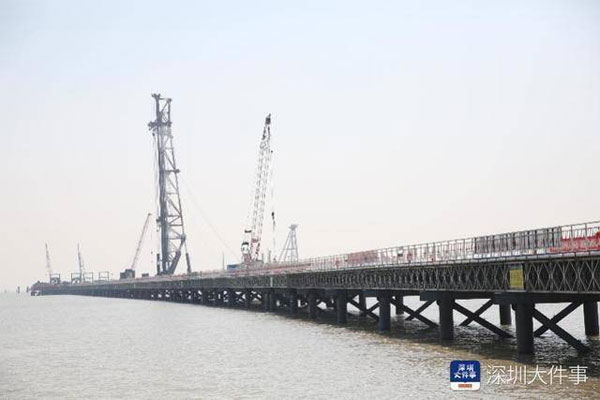Shenzhen link highway-railway use poses challenges
2019-08-06 09:27:10Planning and research are being done by the Shenzhen Urban Transport Planning Center, Guangdong Provincial Transportation Planning Research Center, and CCCC Highway Consultants. They say that the composite structure of the highway and high-speed (intercity) railway presents technical difficulties as there is no precedent to draw upon either at home or abroad.
Therefore, it is suggested that the highway and railway at the tunnel section should be laid separately while in-depth study determines if the composite model can be used in the bridge section.
 |
|
Shenzhen-Zhongshan Corridor sea channel [Photo by Wu Jin / Southern Metropolis Daily] |
Except for the Shenzhen-Maoming Railway, cross-river passages under construction such as the Shenzhen-Zhongshan Corridor sea channel and 2nd Humen Bridge are roadways. Rail or highway-railway dual-use structures have long been sought after.
The 24-kilometer Shenzhen-Zhongshan link includes two engineered islands, two suspension bridges, and the world's widest immersed tunnel with eight traffic lanes in two directions and a capacity of 90,000 automobiles daily.
Construction of the bridges started in April 2018 and the entire project is expected to be put into use in 2024. Once operational, the passage is expected to cut travel time between Shenzhen and Zhuhai from three hours to 30 minutes.
The Shenzhen-Zhuhai Intercity Railway, which forms part of the passage, will have a speed limit of 350 km per hour. It will go from Xili Railway Station in Shenzhen, stop in Qianhai, and reach Zhuhai via tunnels under the Pearl River.
The Pearl River Water Resources Commission of the Ministry of Water Resources has approved 2.3 sq km (568 acres) of land near Shenzhen's Xiaochan Island to be reclaimed from the sea and used as a landing place. In the west, it will land in Zhongshan at the Xinlong Interchange of the Beijing-Zhuhai and Zhongshan-Jiangmen expressways.
- Previous:Female drivers for high-speed trains
- Next:最后一页
